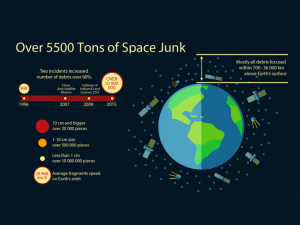Ice Ages: Glaciations in Geologic History

Ice Ages on Earth
Our planet has experienced 5 substantial ice ages. During this time, a hefty layer of ice smothered our planet as a giant snowball.
It was unimaginably frigid at this time when temperatures dropped to 5°C to 10°C lower than it is today.
Ice ages happen for several reasons:
- MILANKOVITCH CYCLE: In the eyes of Milankovitch, Earth is prone to ice ages because of how its cyclical movements affect climate. At least, this is reasonable to assume that the last ice age was 10,000 years ago.
- ATMOSPHERE CHEMISTRY: When our atmospheric chemistry alters, it can influence temperature.
- SOLAR RADIATION: A reduction in solar output reduces heat.
- OCEAN CURRENTS: A swing in ocean currents can trigger ice ages.
Today, we’re going to deep-dive into the cold and explore when Earth was a giant snowball.
The History of Ice Ages on Earth
Throughout Earth’s history, it has experienced drastic shifts in temperature. During warm periods, global mean temperatures were 8°C to 15°C warmer than it is today. Polar areas were so warm that they were free from ice.
But during extended cold periods, global temperatures plummeted from 5°C to 10°C on average which started an ice age. These are long periods of cooling where continents repeatedly endure glacial and interglacial periods. Earth has sustained 6 major ice ages.

What causes ice ages?
Greenhouse gases have a warming effect on the atmosphere. If you reduce the amount of atmospheric carbon dioxide (CO2), then this creates an environment suitable for glaciation.
For example, the Great Oxygenation Event was a time when early Earth was getting filled with oxygen. But when oxygen combines with methane, it releases carbon dioxide.
Methane is a remarkably effective greenhouse gas and traps heat in the atmosphere. Because there was less methane in the atmosphere at this time, the greenhouse effect trapped less heat in the atmosphere.
This sparked temperatures to plummet creating a global ice age. Other factors can disturb the carbon cycle as well. For example, accumulations of organic carbon in the ocean can drastically shift climate.
What ice ages occurred in Earth’s history?
Here is a table that describes ice ages that have occurred in Earth’s history.
| Ice Age | Duration | Geologic Time Period |
| Pongola | 2.9 – 2.8 billion years ago | Archean |
| Huronian | 2.4 – 2.30 billion years ago | Proterozoic |
| Cryogenian | 715 – 547 million years ago | Proterozoic |
| Andean-Saharan | 450 – 420 million years ago | Paleozoic |
| Karoo | 360 – 260 million years ago | Paleozoic |
| Late Cenozoic | 34 – Present | Cenozoic |
Ice Ages: Glaciations in Geologic History
Glaciations have resulted in major changes in the Earth’s climate, landscape, and environment.
They have happened throughout Earth’s history, characterized by large-scale sheet or glacier movements of the Earth’s surface.
Ice ages and glaciation are major events in geologic history, and it has affected the Earth’s climate and surface features over hundreds of millions of years.















Margarita Orlova, this statement is not accurate. Ice ages are primarily caused by variations in the Earth’s orbit and tilt, as well as changes in ocean currents and atmospheric composition. While external factors such as meteors or solar flares can have some impact on the Earth’s climate, they are not the main drivers of ice ages. Additionally, the idea of a “Micro-Nova” causing the Sun to lose energy and plunge the Earth into darkness for days is not supported by scientific evidence.
The most major factor missing in the list of reasons “What causes ice ages”.
When moving through the next arm of Galactic spiral our Sun receives huge amount of debris (dust, meteors etc.) That makes Sun flares and may produce a Micro-Nova. By producing the Micro-Nova, the Sun loosing so much energy that there is no light /heat energy on the Earth for 2-3 days or more. The next Ice Age comes momentarily.
There is a major factor missing in the list of reasons “What causes ice ages”:
Snow can only accumulate to large ice shields on land, not so much on the sea. Therefore, the continental distribution is decisive for the ice to build up and with it the ice-albedo.
At least this is true if we look at Antarctica moving away from the south pole in the Permian era, causing the warm Mesozoic and returning back to the south pole at the end of the cretaceous, causing our current ice age.